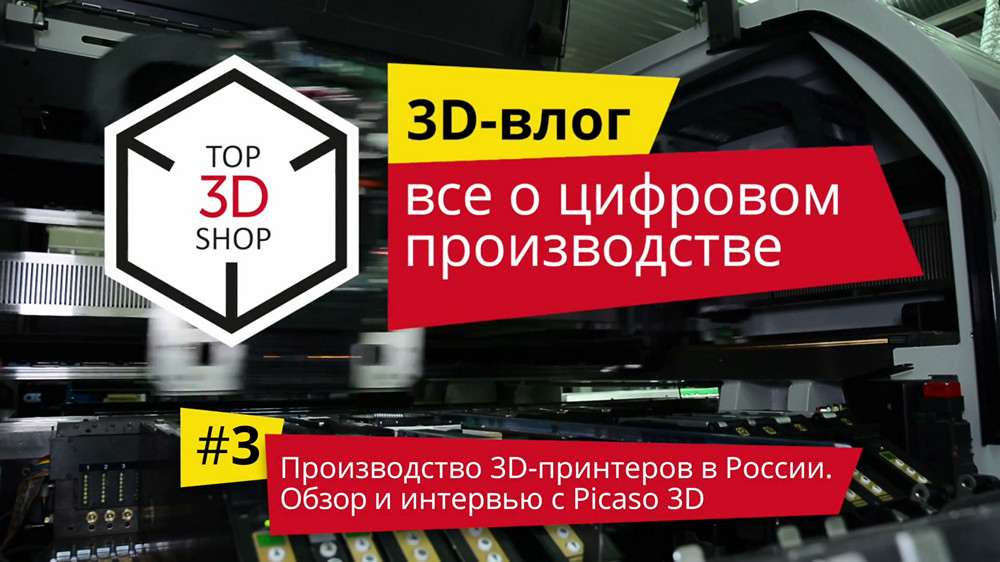
This is the third issue of the digital video production blog. This time we will tell you about the production of 3D printers in Russia on the example of the company PICASO 3D. You will see a tour of the factory in Zelenograd and an interview with the founder, find out how it all began and what are the plans of the famous Russian manufacturer of 3D printers for the near future.

The story of PICASO 3D began in 2010, when two students, Andrey Isupov and Maxim Onisimov, got acquainted with the Rep-Rap project and printed their first GEN X printer in a city apartment in a couple of months.
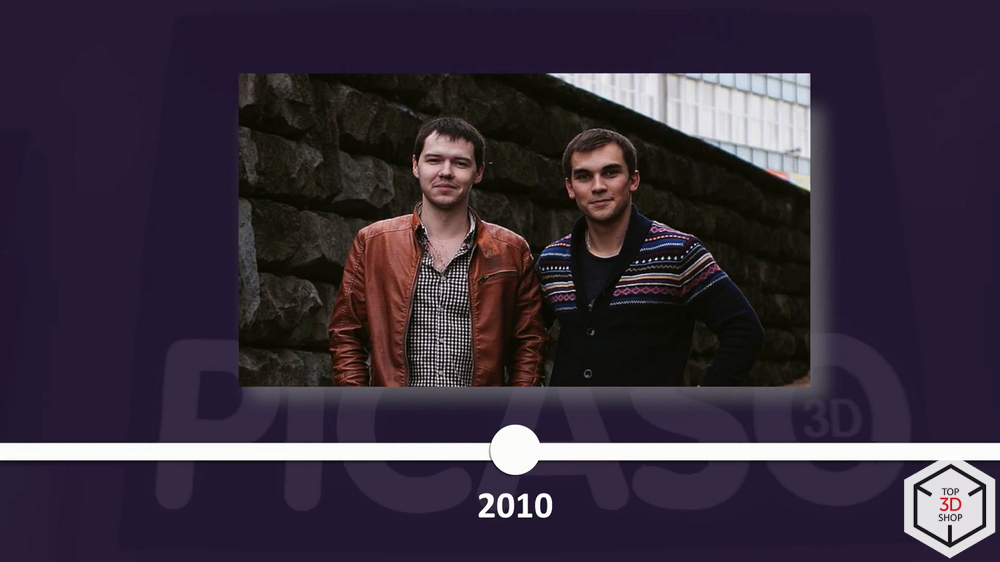
In 2011, they have already sold more than 50 such devices.
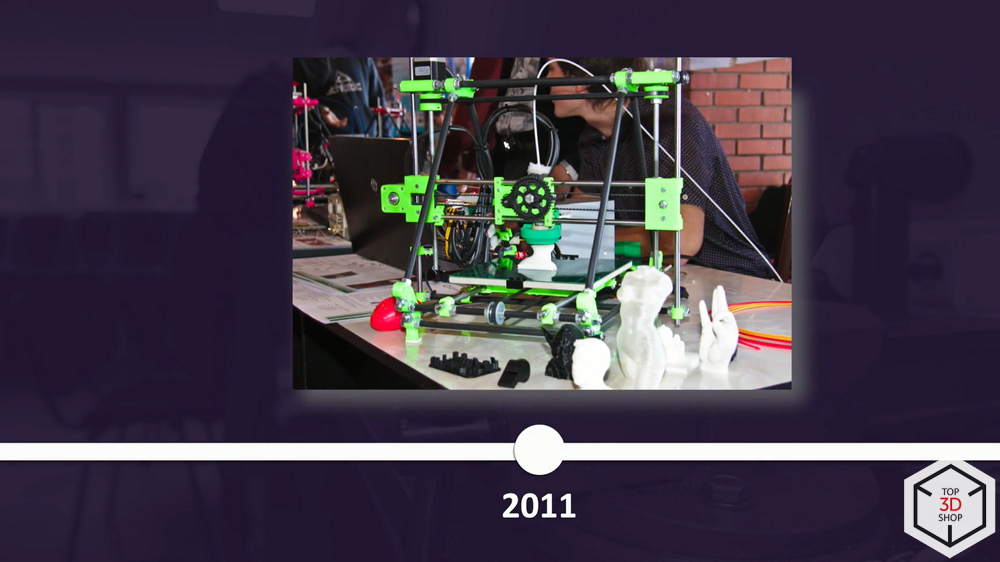
Then there was PICASO 3D Builder and the first experience of mass production.
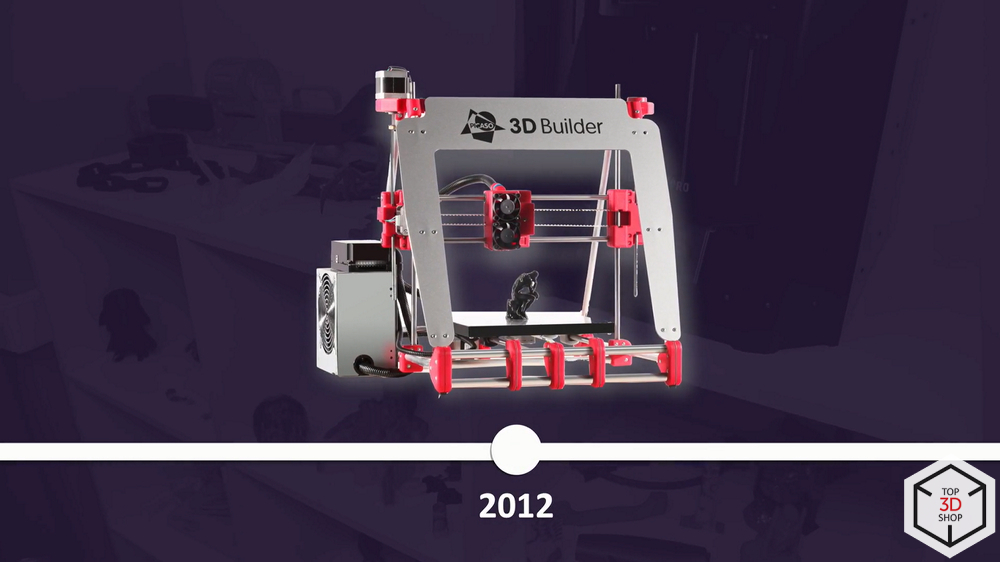
In 2014, the PICASO 3D Designer series was launched, created within the framework of which the
PRO 250 is popular, manufactured and sold today.

The JetSwitch technology of fast dual-extrusion printing used in this printer turned the ideas of what should be an FDM printing with two materials.

Finally, the older model of the line,
Designer X PRO , which has been reincarnated in the new package, still remains one of the best personal 3D printers with FDM technology.
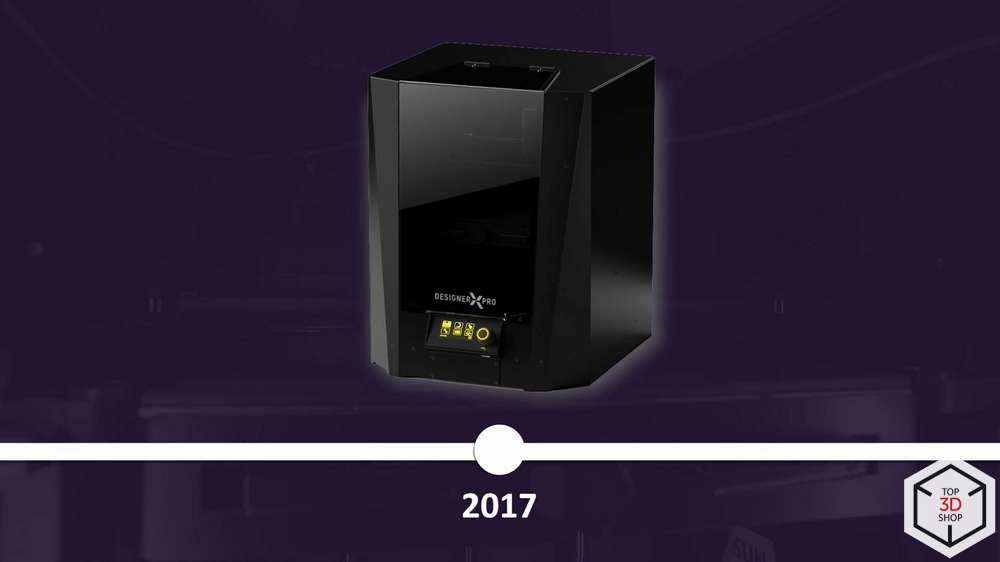
On the production of PICASO 3D, we were met by the co-founder and CEO of the company - Andrey Isupov.
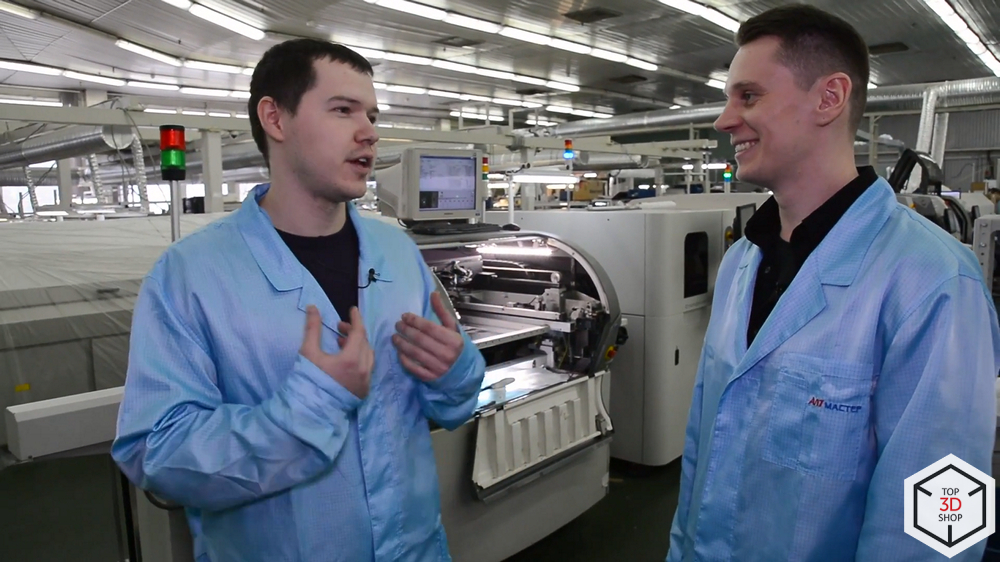
Andrei told us about the complete production cycle of the equipment, its stages and the division of work on the conveyor. All this you can see in the video.
Production
Automation is included in the workflow where special precision is required - when placing elements on printed circuit boards, assembling and soldering them. Most of the work, including the assembly of nodes with multiple checks of performance and quality, is done manually.

The chief engineer of the production site, Vyacheslav, told us about the assembly of printed circuit boards.
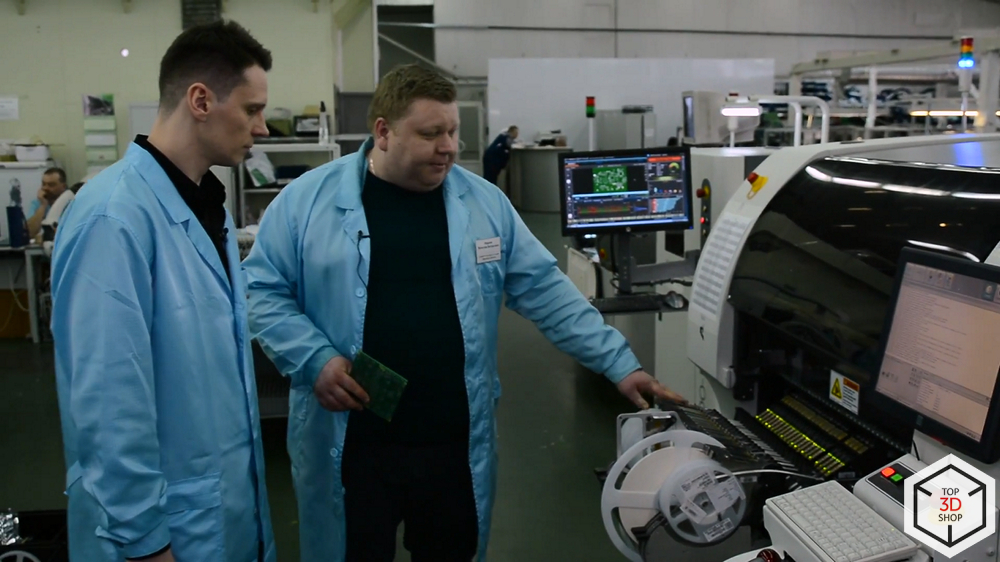 “Special automatic machines apply solder paste to the boards in a stencil.
“Special automatic machines apply solder paste to the boards in a stencil.

Placed transistors and capacitors, other elements.

Small components are fed to the assembly machine on ribbons from reels.

After assembly, the board passes automatic and visual inspection.

Boards are scanned by the scanning system and employees at several stages of assembly.

After assembly, the board is baked at 270 degrees Celsius - the solder melts and a strong connection of components occurs.

As a result, we have a welded board.

Then it is sent to the quality control, firmware, pin assembly, checks, and then enters the assembly.
The number of defects in the production of boards - 0.02%. ”
The plot of the printer assembly is divided into sections.
In one place, the electronics compartments are assembled - a printed circuit board is installed in the electronics compartment, then the compartment is taken for inspection.

In the next section, the tables are assembled - the shafts are installed, all dimensions and rigidity are checked, then the table also goes to the Quality Control Department.

On the assembly mechanics tighten the belts, set the print head.
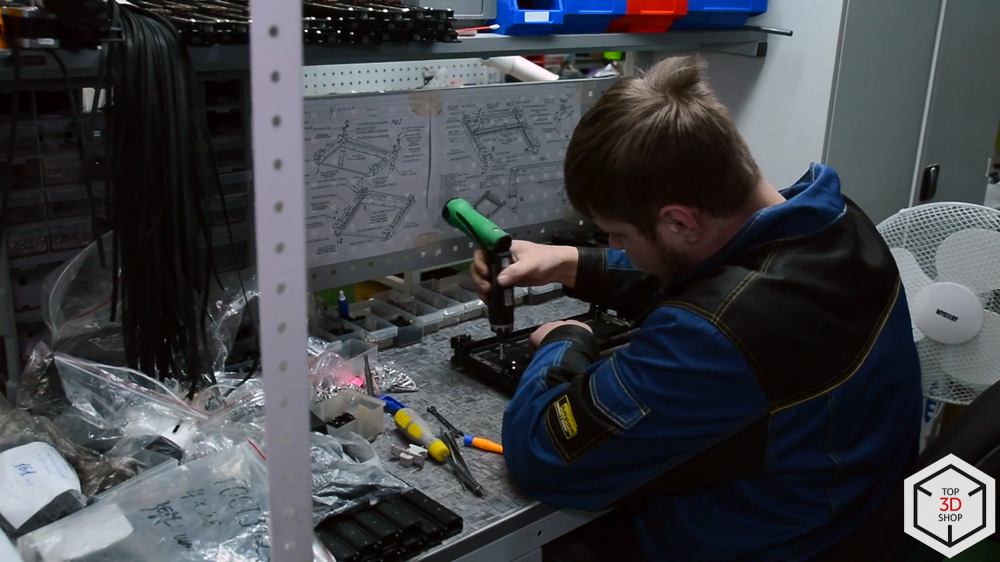
The assembly section of the printheads collect the pride of the company - printheads with JetSwitch technology.

The main feature of this printhead is very fast switching between materials and high print quality.
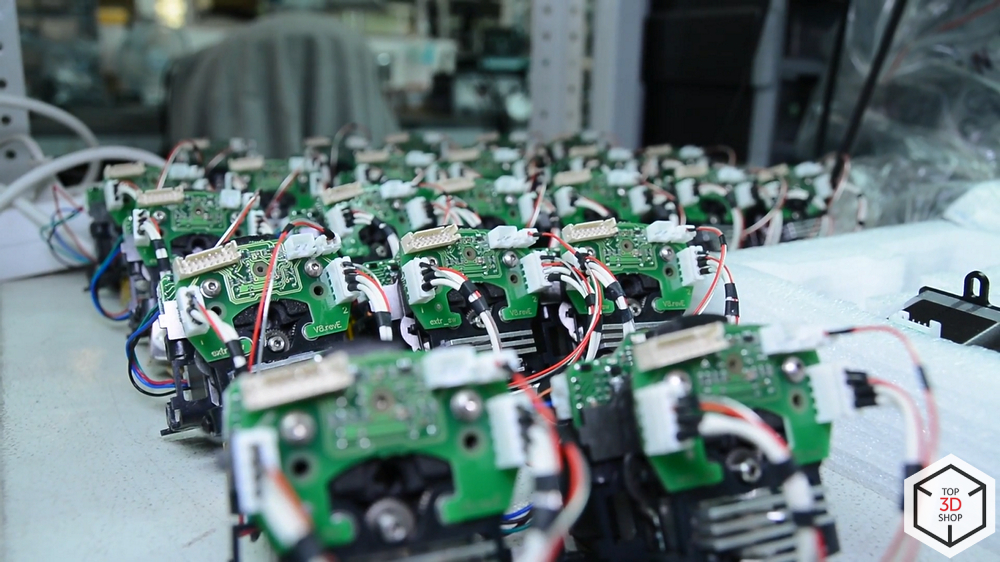
The design of the head includes encoders, temperature and other sensors. The design is made with micron tolerances and contains high-quality components, which greatly increases its cost, but serves as a guarantee of quality.

JetSwitch is a unique PICASO 3D design patented in Russia, the USA, the EU, China and India. At the moment, JetSwitch provides the fastest and most high-quality two-material printing using FDM technology, the developments of other companies are lagging behind, even such as Ultimaker.
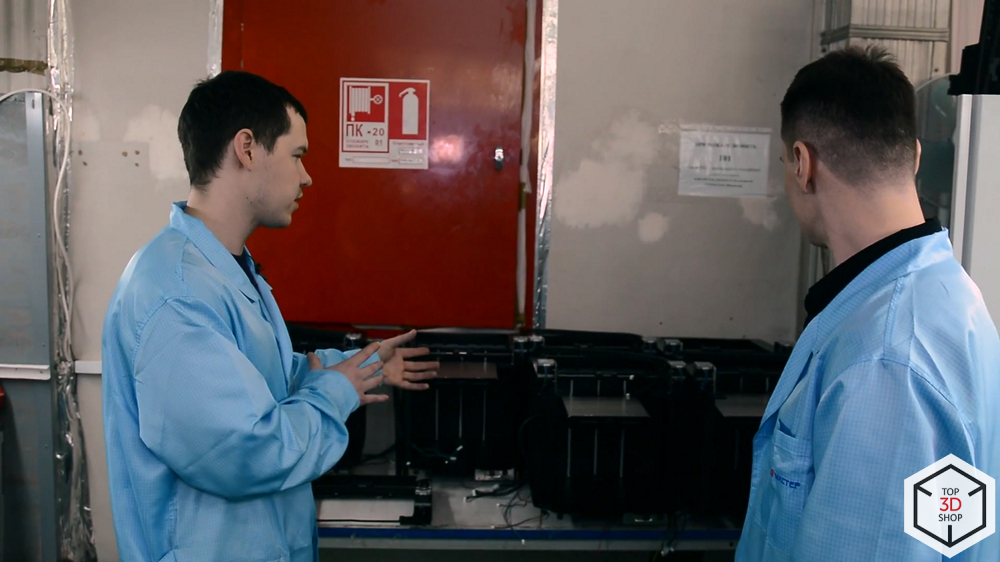
Printers are assembled on a frame, then transferred to the packaging department, where an external case is mounted on them, and then sent for testing.

Printers are tested for several days, check switching, uniformity of supply, alignment of the table, all nodes of the printer are checked in operation.
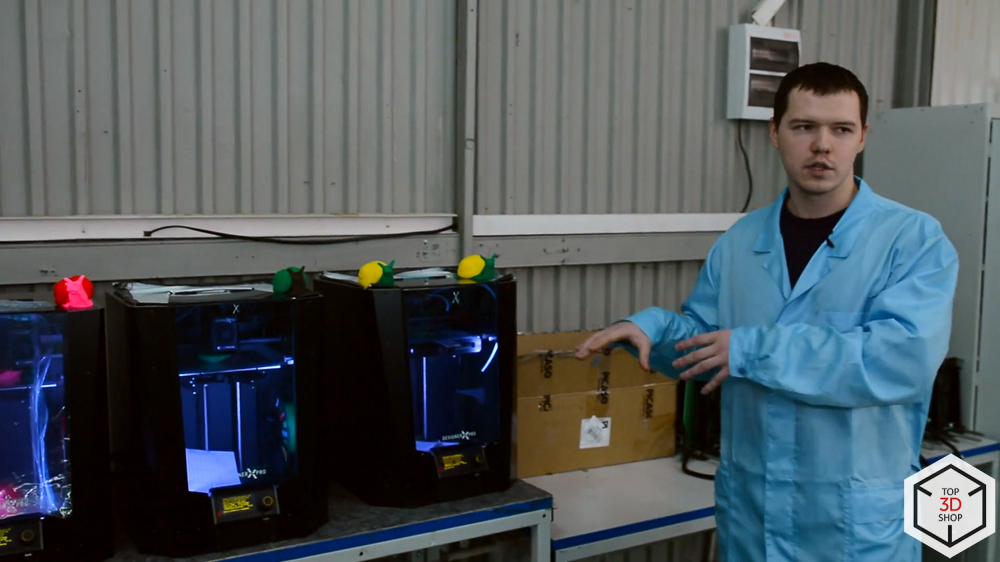
Most parts of the printer, such as the frame, case elements, boards, are made by various enterprises in Russia. Guides makes the German company BOSCH.
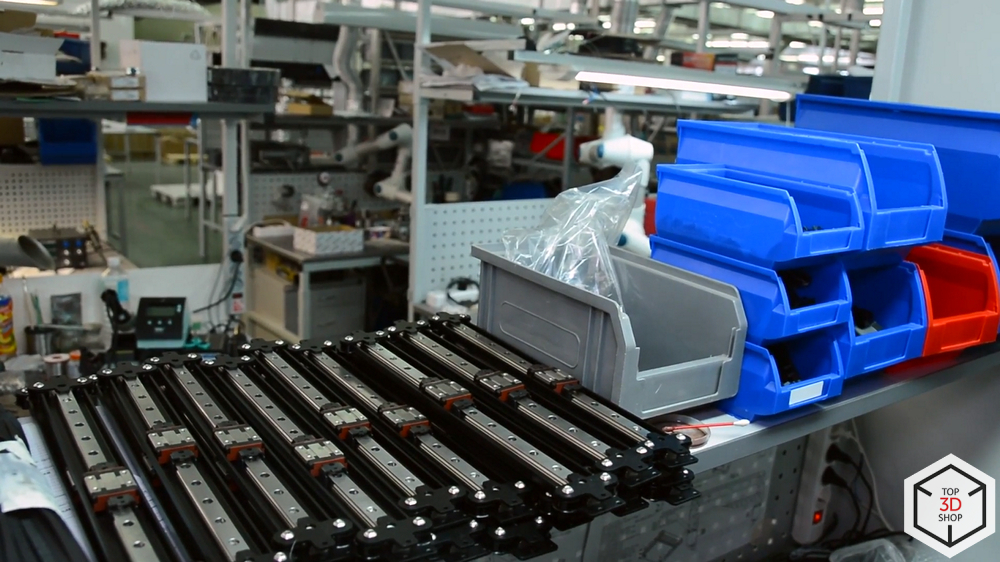
In China, stepper motors, power supplies, fans and standard units are now being ordered, which there already have a fairly high quality.
Only high-quality parts from proven manufacturers are purchased, this is expensive, but it helps to make the printer fault-tolerant and able to work in 24/7 mode.
Assembled, tested and packaged printers are stored at the final production site until shipped to customers.
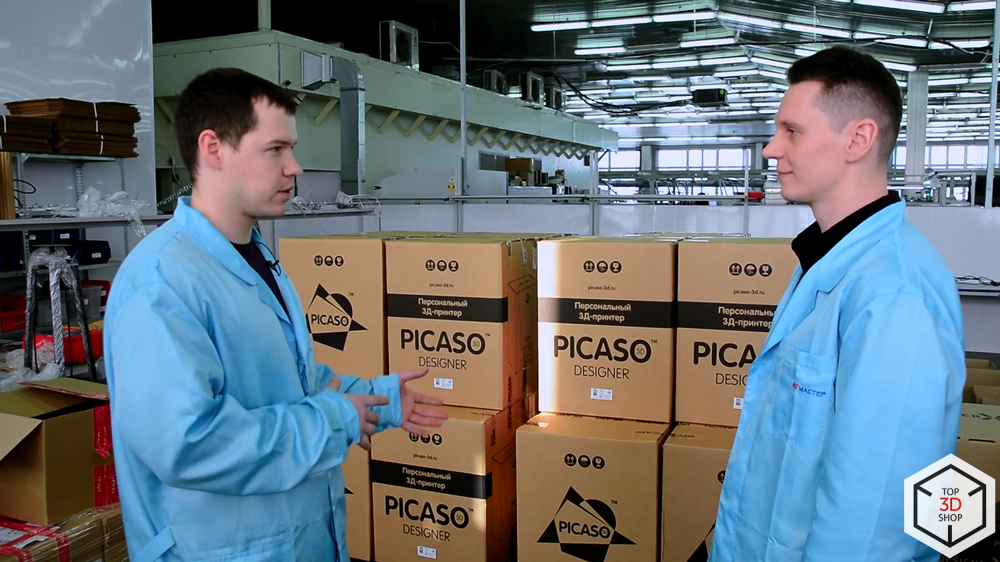
Interview
From production, we went to the office of PICASO 3D, for a more detailed conversation.
 About the title. Why choose PICASO?
About the title. Why choose PICASO?We chose the name for a very long time, there were other similar options, but we stopped on this, as the most understandable, simple and beautiful, incl. and to enter the European market, which we immediately set our sights on.
How did your rap turn become a commercial product, how did it happen?At that time there were very few offers of printers on the market, there were some semi-finished products, no hint of user friendliness and ergonomics, ease of operation. Simply put, there was not a single ready-to-work professional product. We realized that this is a good free niche, and we had an idea of what we want to occupy.
Were production companies among the first customers?Not so much. There were more entrepreneurs who had free money and decided to try something new, such as 3D printing to order.
How has the target audience changed during this time?The technology itself is developing, the equipment is becoming more professional, more customers come from businesses of various sizes. We see the growth of the market in industrial applications, in work with serious engineering plastics that can withstand extreme loads and temperature conditions.
What's new in the materials?Materials with carbon fiber filling have appeared relatively recently. This direction is very interesting because the materials are relatively inexpensive and have very good strength characteristics, and the prints of them withstand temperatures of about 200 degrees Celsius.
Are you preparing any new materials for release to the market?Yes, we are preparing two new materials. Both are coal-filled, these are materials from the Ultran line. One of them is more industrial, having higher output characteristics in finished products, but more hygroscopic and requiring drying before printing at a temperature of about 120 degrees for three hours. If you keep it at 80 degrees or in an atmosphere protected from moisture, it will work stably. The second material is more expensive, gives less durable parts, but absorbs moisture from the air much less. Now we are just conducting tests, compiling property tables and, with
Top 3D Expo, we will have all the characteristics that we will present at the exhibition along with the materials themselves. The main application of our materials - all sorts of engineering parts. High strength, low friction - very well suited for all kinds of gears. Tensile strength is 2-2.5 times higher than that of ABS.
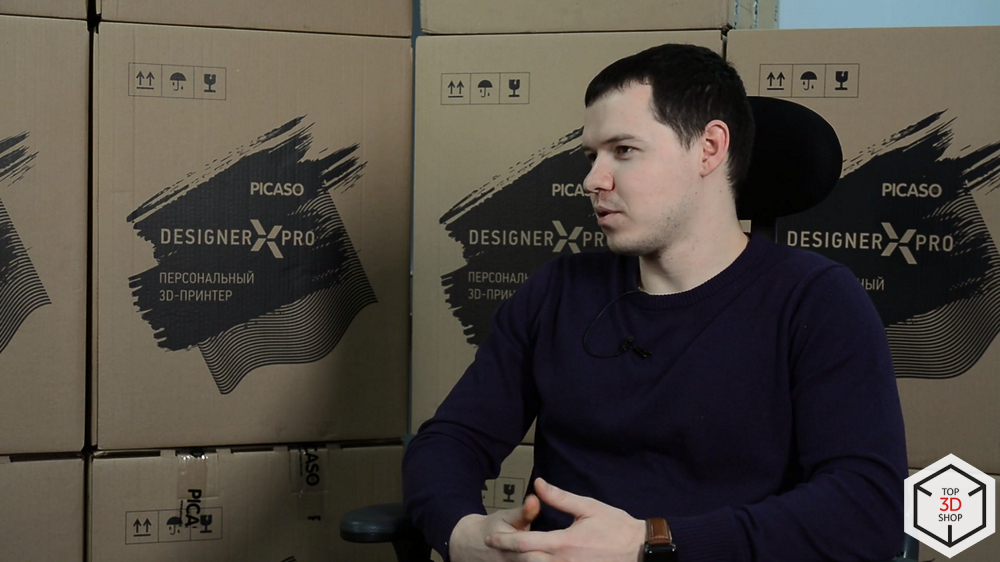 Very interesting. How much will this plastic cost?
Very interesting. How much will this plastic cost?While I will not disclose the order of prices, we will call them when we announce a line of materials for sale. Of course, the cost will be higher than that of household PLA plastics, because these are target materials intended for industry.
What are the successes of PICASO 3D in the international market?While we are going to international exhibitions, we are of interest to foreign colleagues and potential customers. Model X PRO, we created it for the international market. This year we will start sending out demonstration samples to foreign distributors, and by the end of the year we plan to enter into full-fledged international sales.
How many printers do you sell annually?The figures vary from year to year, on average it is about 1,500 cars, this year we want to sell 2,000.
How is it that you have any competitors in Russia?One company cannot occupy the entire market - there is antitrust law. We do not seek to create machines for the closure of all segments. There are niches that are not yet in our circle of interests, our main goal is to create the highest quality devices in our segment, and not to close the entire market anyhow. From the very beginning, we didn’t want to make small hobby printers - they are simply not interesting for us. We make devices for practical industrial applications, this is a completely different story. Having created JetSwitch and X PRO on its basis, we have prepared a platform for the production of new products that meet our quality standards and belong to our circle of interests.
Will there be something new? When will we find out about this?We will show the part at the
Top 3D Expo on April 10, the rest later, we'll see when.
How do you see the development of additive technologies and digital production in general? Do you think that a personal 3D printer will be on the table with every engineer?There was such a slogan “3D printer in every house”, and so - I don’t believe in it. This product is not for home. Of course, there are enthusiastic people who put the machines at home, and for them the operation of a 3D printer will not be a problem. But the main target audience is professionals, for whom it is an indispensable tool - designers, engineers. Yes, in the work of the designer - the best option when every workplace has its own personal 3D-printer.
How do you see the development of additive technologies in the near future?No one knows what new technologies can appear on the market at any time and change the “rules of the game”. An example is the CLIP technology, which appeared suddenly, changed the SLA technologies. As for FDM, if we look at what we have now, most likely - the low-cost segment of personal FDM printers will begin to change - cars will gradually become more expensive, but they will increase their capabilities much faster. First of all, it concerns printing with stronger and more constructive materials.
The story of PICASO 3D is a great example of the fact that digital production in Russia lives and develops, as well as an excellent illustration that ordinary students can create their own cool project and it will become commercially successful. I wish the team of PICASO 3D development in the Russian market, recognition in the international arena, as well as even more new products.

We invite you to the exhibition-conference
Top 3D Expo , which will be held on April 10 in Technopolis "Moscow". The entrance is free, register on the
site and come by presenting your passport.
At the exhibition, you will be able to see the PICASO 3D 3D printers “live” and the samples printed on them, ask questions to the company's employees and learn a lot of new and interesting things.
Also on display are the KUKA industrial robot, the Bauman Racing Team car, the VR Concept virtual reality stand and much more.